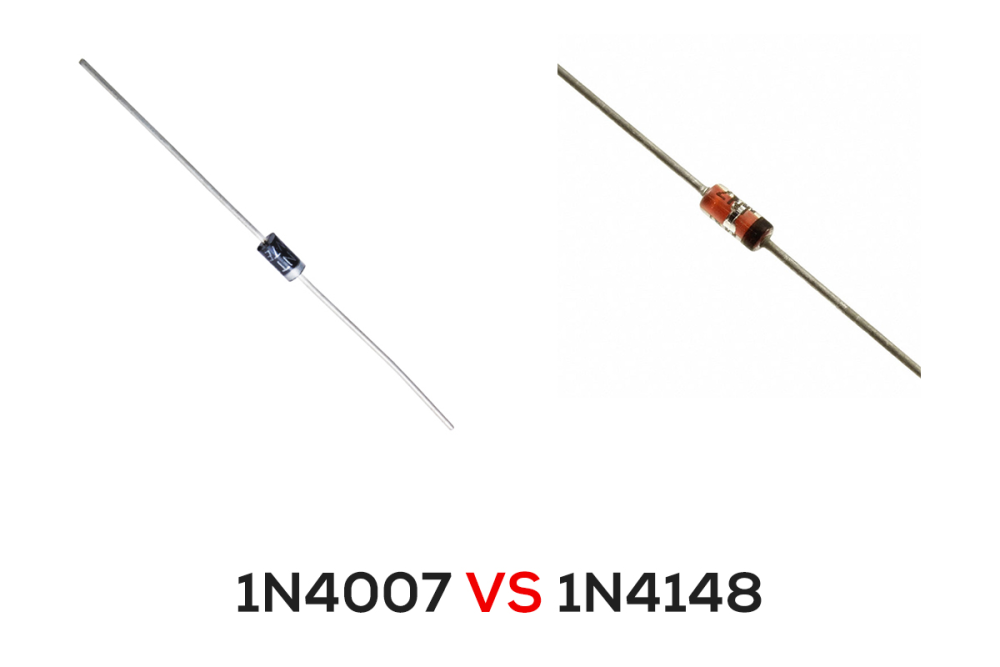Search the Community
Showing results for tags '1n4007 vs 1n4148'.
-
Hey guys, this is Erin, in today's blog we'll discuss the complete guide about the differences between 1N4007 vs 1N4148. The 1N4007 and 1N4148 are both diodes, but they have different characteristics and applications due to their distinct electrical properties. Here are the key differences between the two: Diode Type: 1N4007: This is a silicon rectifier diode, specifically a standard recovery rectifier diode. It is designed for high-voltage, high-current applications and is typically used for rectifying AC voltage to DC voltage in power supplies and other applications requiring high current handling. 1N4148: This is a silicon switching diode, also known as a fast switching diode or signal diode. It is designed for high-speed switching applications and is commonly used in low-power and high-frequency circuits. Forward Voltage Drop (VF): 1N4007: It has a relatively higher forward voltage drop, typically around 0.7 to 1.1 volts depending on the current passing through it. This higher voltage drop means it dissipates more power when conducting. 1N4148: It has a much lower forward voltage drop, typically around 0.6 to 0.7 volts. This lower voltage drop is advantageous in low-voltage applications as it reduces power dissipation and voltage loss across the diode. Reverse Recovery Time: 1N4007: This diode has a longer reverse recovery time, meaning it takes more time to switch off when the voltage polarity across it is reversed. This characteristic is acceptable for low-frequency power applications but not suitable for high-speed switching. 1N4148: It has a very short reverse recovery time, making it suitable for high-frequency applications and fast-switching circuits. It can switch on and off quickly in response to changes in voltage. Maximum Current Rating: 1N4007: It has a relatively higher maximum current rating, typically in the range of 1 to 2 amperes. This makes it suitable for higher current applications, such as power rectification. 1N4148: It has a lower maximum current rating, usually around 300 to 500 milliamperes. While it can handle moderate currents, it is not suitable for high-current applications. Reverse Voltage Rating: 1N4007: It has a higher reverse voltage rating, typically around 1000 volts or more. This makes it suitable for applications that require high reverse voltage blocking capability. 1N4148: It has a lower reverse voltage rating, typically around 75 to 100 volts. It is designed for lower-voltage applications and may not be suitable for high-voltage situations. Read more: 1N4007 vs 1N4148: What are Differences and How to Choose

